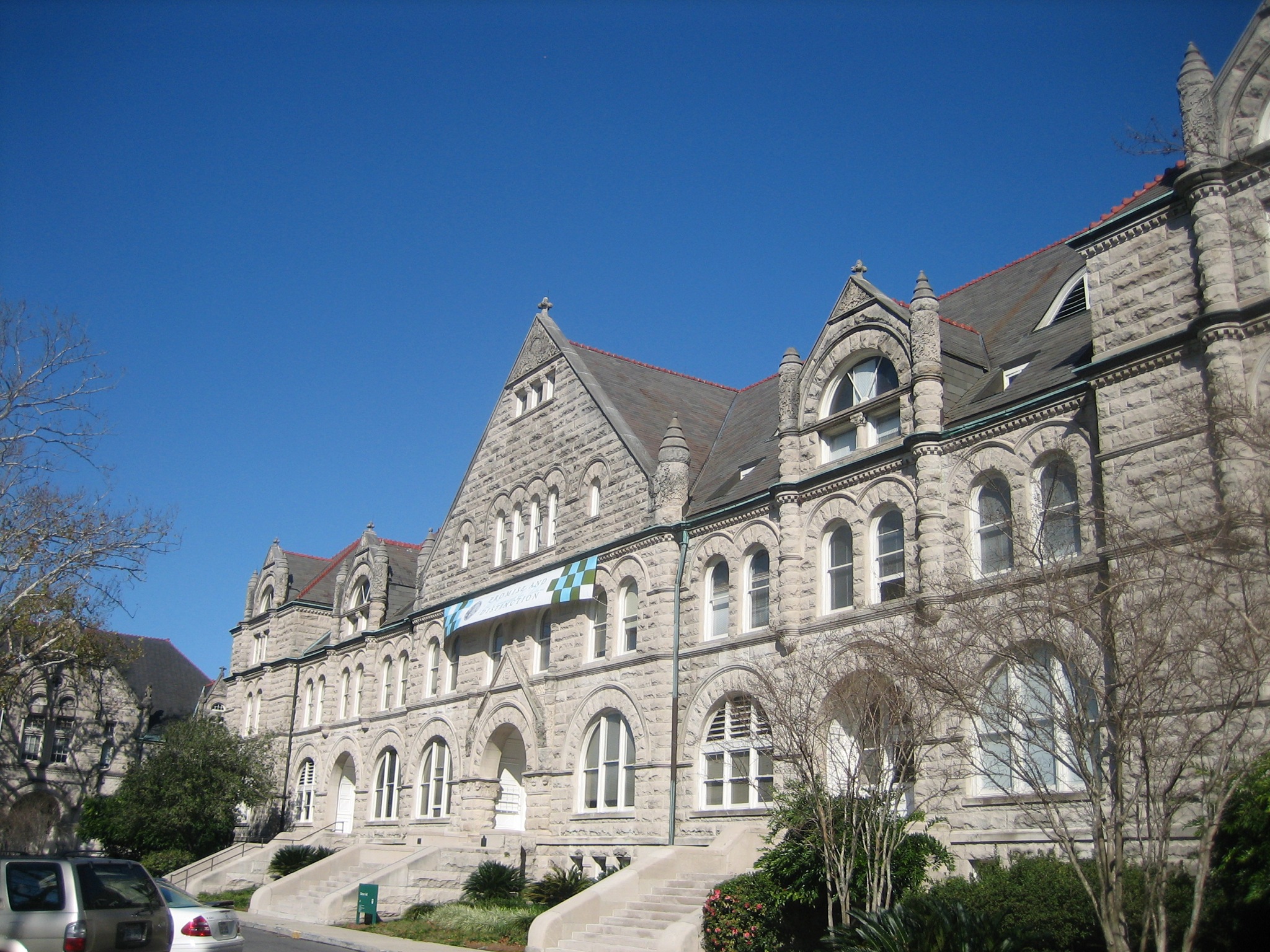An anonymous student described their experience at Tulane as follows: “Being Black at Tulane is experiencing institutional racism. It’s wanting to transfer but not knowing where to go or where to feel safe.”
As a senior in high school, I vividly recall the innumerable advertisements I received from Tulane University, an institution that “…works to foster a sense of well-being and belonging among people of all backgrounds.” Plastered on the front cover of these brochures were students of various ethnic backgrounds with wide smiles, and the phrase “#3 Happiest Students” in big, bold, and bright letters. Only the audacious, right?

Gibson Hall at Tulane University (photo by Francois Gemenne – Flickr)
Another advertisement showcased a “Tulane University” student of color, with yet another big, bold, and bright sign stating, “Committed to Diversity and Inclusion: Tulane University.” However, Tulane’s Head of Caucasian Affairs outed the university by admitting that “…we took successful Loyola students of color, paid them to wear Tulane merchandise and told them to walk around campus, so we could take photos.”
In August of 2020, I packed my suitcase, headed to the airport, and flew 1,304.9 miles to embark on my novel journey in New Orleans. From the moment I stepped on campus, I noticed that these diverse groups of students were nowhere to be found, other than on the brochures that, soon after, ended up in my recycling bin. The phrase of my freshman class being the “most diverse” was constantly repeated; however, still, it is 69% Caucasian.
Additionally, last month, the Tulane University School of Medicine suspended Dr. Princess Dennar from her position as the first Black female residency director. An Instagram account titled @wokedoctors posted a photo of Dr. Dennar with the caption, “In fear of losing white applicants, Tulane Medical School fired their first Black female Program Director #JusticeforDrDennar,” which quickly caught the eye of publications from the Tulane Hullabaloo to NBC News.
Starting from when Dr. Dennar was interviewed for the role in 2008, Dr. Dennar has been experiencing discriminatory conduct. After receiving backlash in a series of letters and social media posts, the school recently reversed this decision; however, without the immense external pressure to do so, there is no guarantee that the school would have overturned their decision.
Furthermore, a popular Instagram account, @blackattu, has surfaced in which students can partake in exposing the racism at Tulane— the aspects left out in the advertisements, of course. Submitted by anonymous persons, an administrator of a department was exposed for describing Black students as “rude, aggressive and entitled.” To hone in on a classroom setting, Tulane University Professor Albrecht “does not like race to come up in his courses. He shuts down conversations about race all the time.”
This occurrence is not simply a ‘Dr. Dennar problem,’ or a singular person’s problem, but has inspired a resistance to the decades of systemic racism and “whiteness” ingrained into academic institutions nationwide.
Tulane University is now left with the challenge of how to increase their diversity in a morally correct manner. Thorough and adaptable diversity actions plans, trainings, and conversations can be delivered and accessible. More so, the student body can push back on the traditional agendas and curriculum, as many did in the aftermath of the firing of Dr. Dennar.
But, what more can be done? Well, The City College of New York, abbreviated as CUNY, is ranked as one of the most diverse schools in the nation. At a quick Google search, one can find not only the college’s, but also the state of New York’s policies that enhance diversity and inclusion, thus making CUNY very transparent on their emphasis for diversity, equal opportunity, and non-discrimination policies.
The school works to draw students from their immediate areas and also have an appeal to low-income and first-generation college students, which can be reflected in the areas from which they most widely accept students, their tuition numbers, and financial aid opportunities.
Additionally, people of color traditionally account for just 16% of college and university administrators. However, CUNY has challenged this statistic. Of the nine presidents, two are Asian, two are Black, and two are Latina. President Matos Rodriguez explains that “you want to be able to replicate that [the diverse population they wish to serve] and to show communities that we serve and the students that we serve that they can see themselves in the leadership and the staff and the faculty.” If students of various backgrounds see themselves represented in leadership, their inner confidence skyrockets and they can feel more encouraged to attend that institution.

While changing gears back to Tulane University, the City College of New York can be an exceptional example. A majority of Tulane’s administration are white folks who can potentially pollute the narrative of a more diverse and inclusive student body, but lower tuition numbers, more financial aid opportunities, and a representative administration can be notable starting points. While CUNY’s tuition is about $10,000 per year, Tulane overpowers that number at an average of $78,000 per year. In the current state of the United States, high tuition numbers tend to disproportionately affect minority groups.
The term “diversity” has become substantially utilized by colleges as a selling point to applicants, and they will do anything, even false advertisements, to increase that diversity percentage. As Chief Diversity Officer Luke Wood says, “If you have to feel like you have to become a lie in order to advance yourself, then that speaks to a moral failing that may speak about broader implications about your moral compass,” and perhaps Tulane University needs to hear these words.
As the previously mentioned anonymous student says, “Being Black at Tulane is confronting your internalised racism while the white people (including your professors) are 50 steps behind you in confronting their own.”
 NOLAbeings Multimedia artist Claire Bangser created NOLAbeings as a portrait-based story project that marries...
NOLAbeings Multimedia artist Claire Bangser created NOLAbeings as a portrait-based story project that marries...  Voodoo in New Orleans: Reviving history: New Orleans fortune telling This article takes a deep dive into the history of Voodoo in New Orleans, its hybridization with Catholicism, and its present-day place in the city's culture. The author visits fortune-tellers in the French Quarter, using their guidance as a tool for introspection rather than a deterministic predictor of the future. Through her experiences in New Orleans, the author feels a mystical connection to both the past and the future.
Voodoo in New Orleans: Reviving history: New Orleans fortune telling This article takes a deep dive into the history of Voodoo in New Orleans, its hybridization with Catholicism, and its present-day place in the city's culture. The author visits fortune-tellers in the French Quarter, using their guidance as a tool for introspection rather than a deterministic predictor of the future. Through her experiences in New Orleans, the author feels a mystical connection to both the past and the future. 
[…] Source […]